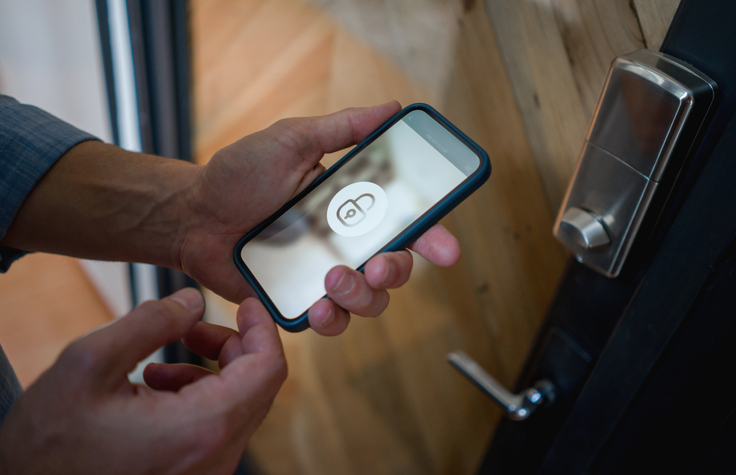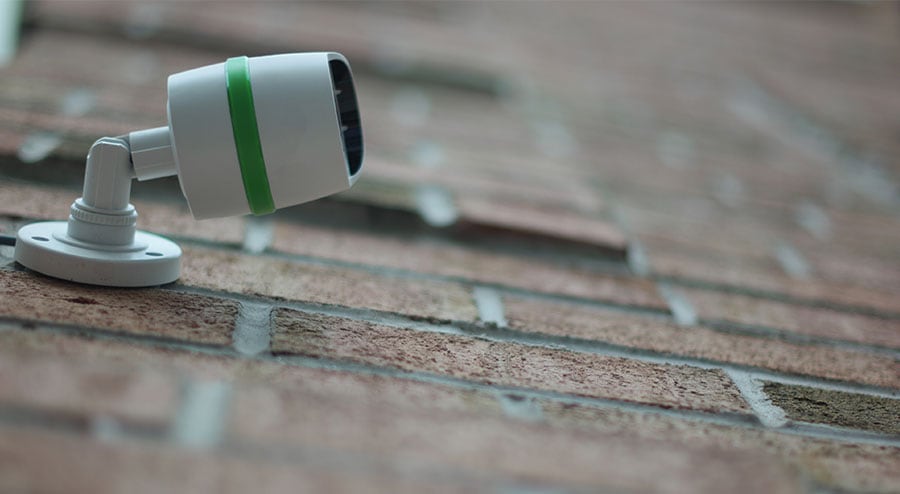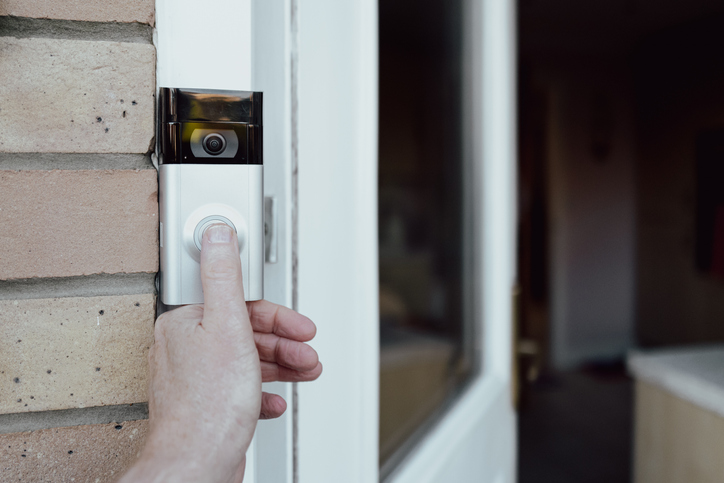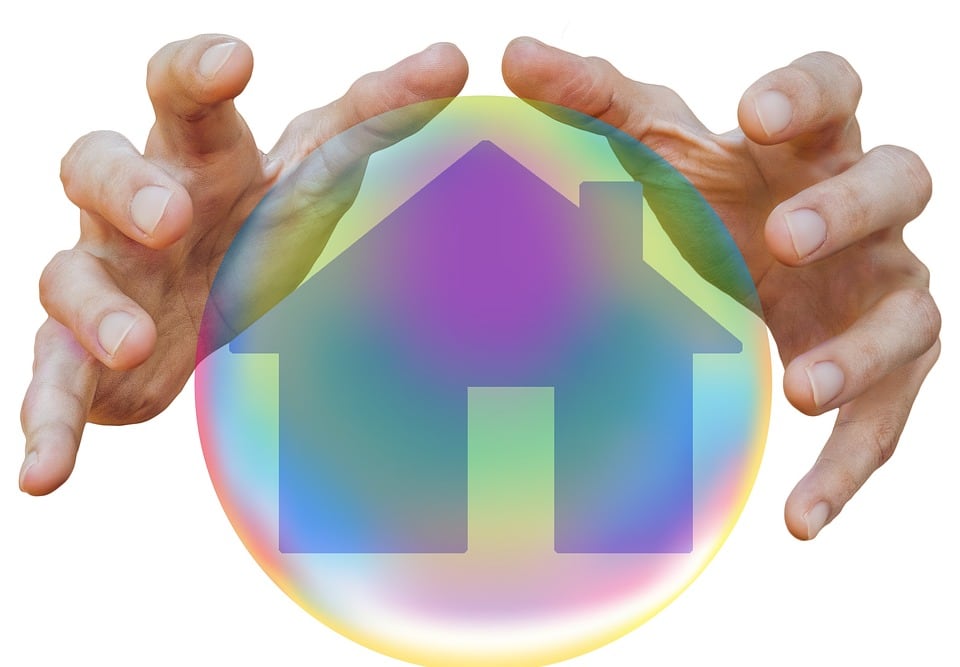In an increasingly connected world, home security apps have become an essential tool for homeowners to manage their security systems remotely. These apps offer convenience, control, and peace of mind by allowing users to monitor their homes, access live video feeds, receive real-time alerts, and control various security devices—all from the convenience of their smartphones or tablets. With the ability to manage and secure their homes from anywhere, home security apps have revolutionized the way homeowners protect and monitor their properties.

Table of Contents
- Overview Of Home Security Apps And Remote Management
- How Home Security Apps Allow Users To Monitor Their Homes Remotely
- Features Of Home Security Apps
- Popular Home Security Apps For Remote Management
- Security And Privacy With Home Security Apps
- Practical Applications Of Home Security Apps
- Future Trends And Innovations In Home Security Apps
- Conclusion
Overview Of Home Security Apps And Remote Management
Home security apps are mobile applications designed to enable users to remotely manage and monitor their home security systems. These apps provide a convenient and accessible way to control various aspects of the security system, such as surveillance cameras, alarms, locks, and sensors, from a smartphone or tablet. The primary purpose of home security apps is to enhance the overall security of homes by allowing users to stay connected and in control, even when they are away.
How Home Security Apps Allow Users To Monitor Their Homes Remotely
Home security apps utilize the power of internet connectivity and smart devices to establish a secure connection between the user’s smartphone and their home security system. Through this connection, users can access real-time information, receive notifications, and control various security devices remotely. The apps typically provide a user-friendly interface with intuitive controls and live video streaming capabilities, enabling users to monitor their homes from anywhere with an internet connection.
By logging into the app using their credentials, users gain access to a dashboard that displays the status of their security system, including the current state of alarms, cameras, sensors, and other connected devices. They can view live feeds from security cameras, review recorded footage, and receive instant alerts when a security event is detected, such as a motion detected or a door opening.
Cybersecurity incidents have surged by 53%, prompting 97% of organizations to introduce new remote work security measures.
Benefits Of Remote Management
Home security apps offer unparalleled convenience by allowing users to manage their security systems remotely. Whether they are at work, on vacation, or simply away from home, users can effortlessly arm or disarm the system, adjust settings, and receive real-time updates—all through the app on their smartphone. This convenience eliminates the need for physical keypads or control panels and provides a seamless and user-friendly experience.
Home security apps empower users with enhanced control over their security systems. With just a few taps on their smartphone, users can remotely activate or deactivate alarms, lock or unlock doors, adjust lighting, and even communicate with visitors or potential intruders through two-way audio. This level of control provides homeowners with a sense of authority and the ability to take immediate action, whether it’s to prevent a false alarm or address a security issue promptly.
Features Of Home Security Apps
In order to effectively manage and monitor home security systems remotely, home security apps offer a range of essential features designed to enhance control, provide real-time alerts, and streamline automation. These features include remote access to security cameras, real-time notifications, arm/disarm functionality, two-way audio communication, integration with smart home devices, and geofencing capabilities.
Real-Time Alerts And Notifications
Home security apps provide real-time alerts and notifications to keep users informed about potential security breaches or other events. These alerts can be triggered by various factors, such as intrusion detection, motion detection, door/window sensors, or smoke and carbon monoxide alarms. When an event occurs, the app sends an immediate notification to the user’s smartphone, allowing them to take prompt action. This feature is crucial for maintaining the security and safety of the home, as it enables users to respond quickly to any potential threats or emergencies.
Arm And Disarm Functionality
Home security apps offer convenient arm/disarm functionality, allowing users to control their security systems remotely. Users can easily activate or deactivate their alarms, lock or unlock doors, and control other security features with just a few taps on their smartphones. This feature is particularly useful when users need to grant access to someone, such as a family member or a trusted service provider, while they are away from home. It provides flexibility and peace of mind by giving users complete control over their security system at their fingertips.
Two-Way Audio Communication
Some home security apps incorporate two-way audio communication, enabling users to interact with visitors or potential intruders remotely. This feature allows homeowners to speak to visitors at their door, provide instructions, or even deter potential intruders by making their presence known. The two-way audio functionality enhances the security and convenience of the app, as it provides a means of communication and engagement with individuals present at the home’s entry points.
Integration With Smart Home Devices
Home security apps often integrate with smart home devices, allowing users to have centralized control over various aspects of their home automation system. Integration with devices such as smart locks, smart thermostats, lighting controls, and motion sensors enables users to create custom automation rules and routines. For example, users can set the app to automatically turn on lights and adjust the thermostat when they disarm the security system upon arriving home. This integration enhances the overall efficiency and convenience of managing both security and other smart home functionalities through a single app.
Geofencing Capabilities
Many home security apps offer geofencing capabilities, which enable automatic adjustments to the security system based on the user’s location. Geofencing uses the GPS or Wi-Fi capabilities of the user’s smartphone to define a virtual boundary around their home. When the user enters or leaves the defined boundary, the app can automatically perform actions such as arming or disarming the security system, adjusting lighting, or changing thermostat settings. Geofencing enhances convenience by eliminating the need for manual adjustments and ensuring that the security system aligns with the user’s presence or absence from the home.
Popular Home Security Apps For Remote Management
These popular home security apps, including Ring, Arlo, ADT Control, and SimpliSafe, offer a wide range of features for remote management, providing users with convenience, control, and peace of mind when it comes to monitoring and securing their homes.
Ring
Ring is a well-established home security app that offers a comprehensive range of features for remote management. It provides remote access to Ring security cameras, allowing users to view live video streams and recorded footage. Ring also integrates with various smart home devices, offering compatibility with popular platforms like Amazon Alexa, enabling users to control their security system through voice commands. With Ring’s optional professional monitoring services, users can have peace of mind knowing that their home is monitored 24/7 by security experts. The app also provides advanced analytics and insights, allowing users to track security events and trends.
Arlo
Arlo is a highly-rated home security app known for its high-quality video monitoring capabilities. It offers remote access to Arlo security cameras, providing users with live video streaming and playback features. Arlo also integrates with smart home devices, allowing users to create custom automation rules. The app does not include professional monitoring services by default, but it offers optional subscription plans for advanced features such as continuous video recording and e911 emergency call service. Arlo provides users with insights and analytics to help them better understand their security system’s performance.
ADT Control
ADT Control is a comprehensive home security app provided by ADT, a trusted name in the security industry. The app offers remote access to ADT-monitored security cameras, enabling users to view live video feeds and recorded clips. ADT Control integrates with voice assistants like Amazon Alexa and Google Assistant, allowing users to control their security system through voice commands. ADT Control includes professional monitoring services, providing users with around-the-clock monitoring and quick emergency response. The app also offers advanced analytics and insights to help users monitor their home’s security status effectively.
SimpliSafe
SimpliSafe is a popular home security app that provides users with remote management capabilities for their SimpliSafe security system. The app allows users to remotely access live video feeds from their SimpliSafe cameras and review recorded footage. It also integrates with voice assistants like Amazon Alexa, enabling users to control their security system using voice commands. SimpliSafe offers optional professional monitoring services, giving users the option to have their homes monitored by security experts. The app provides users with advanced analytics and insights, helping them track security events and make informed decisions regarding their home’s security.
Security And Privacy With Home Security Apps
As home security apps involve the transmission and storage of sensitive data, it is crucial to address concerns regarding data security and unauthorized access. App developers recognize the importance of protecting user information and employ various measures to safeguard data from potential threats. These measures include encryption, secure data transmission protocols, and stringent access controls.
Encryption, Authentication, And Other Security Measures
Home security apps employ encryption techniques to secure data transmission between the app and the user’s devices or cloud servers. This ensures that even if intercepted, the data remains unreadable to unauthorized parties. Additionally, robust authentication methods, such as strong passwords, two-factor authentication, or biometric authentication, are implemented to ensure that only authorized users can access the app and associated security systems.
Furthermore, reputable home security app providers implement additional security measures, such as secure cloud storage, firewalls, intrusion detection systems, and regular security audits to identify and address potential vulnerabilities. These measures aim to protect user data, prevent unauthorized access, and maintain the integrity and confidentiality of sensitive information.
Choosing Reputable And Trusted Home Security App Providers
Choosing a reputable and trusted home security app provider is paramount in ensuring the security and privacy of user data. Reputable providers prioritize data protection and invest in robust security infrastructure to safeguard user information. They adhere to industry standards and best practices for data security and privacy.
It is recommended to research and select home security app providers with a proven track record, positive user reviews, and a transparent privacy policy. Reading user testimonials and reviews can offer insights into the provider’s reliability and commitment to data security. Additionally, opting for apps from established security companies or well-known brands in the industry can provide an added layer of trust and confidence.
Practical Applications Of Home Security Apps
The practical applications of home security apps extend beyond basic security measures. By managing access control, enabling vacation monitoring, promoting energy efficiency, and providing emergency assistance features, these apps enhance convenience, safety, and peace of mind for homeowners.
Remotely Locking And Unlocking Doors
Home security apps provide users with the convenience of remotely managing access control to their homes. With a few taps on their smartphone, users can lock or unlock doors, granting or revoking access to trusted individuals such as family members, friends, or service providers. This feature is particularly useful when homeowners are away and need to provide temporary access or when unexpected visitors arrive and need to be granted entry. Remote access control enhances security by allowing homeowners to ensure that only authorized individuals can enter their homes.
Monitoring While On Vacation
Home security apps play a crucial role in vacation monitoring by enabling homeowners to keep tabs on their homes remotely. Users can access live video feeds from their security cameras, allowing them to check for any unusual activities or potential security breaches. This feature provides peace of mind for travelers, as they can visually verify the well-being of their home and take appropriate action if any suspicious activities are detected. Vacation monitoring through home security apps helps homeowners enjoy their trips with confidence, knowing that their homes are being monitored even when they are away.
Energy Efficiency
Home security apps often integrate with smart home devices, enabling users to control and manage their energy usage remotely. By accessing the app, users can adjust settings and control energy-consuming devices such as thermostats, lighting, and smart plugs. For example, users can remotely turn off lights that were accidentally left on, adjust the thermostat to conserve energy, or schedule specific times for devices to turn on or off. This capability helps homeowners save energy, reduce utility costs, and contribute to a more sustainable lifestyle, all from the convenience of their home security app.
Emergency Assistance
Home security apps provide a valuable emergency assistance feature in the form of panic buttons or distress signals. With a single tap on the app, users can activate a panic mode that triggers an immediate alert to emergency response teams, such as the police or private security personnel. This feature is especially crucial in situations where users feel threatened or require immediate assistance. Integration with emergency response teams ensures a swift response and provides an extra layer of protection and peace of mind for homeowners in times of crisis.
Additionally, some home security apps offer integration with emergency services like fire departments or medical response teams. This integration allows users to quickly access emergency services through the app, connecting them to the appropriate help when faced with a fire, medical emergency, or other critical situations.
Future Trends And Innovations In Home Security Apps
The field of home security apps is constantly evolving, with emerging technologies and trends shaping the future of remote management and monitoring. Some of these technologies include advancements in connectivity, cloud computing, machine learning, and sensor technology. These emerging technologies are driving innovation in home security apps, enabling more sophisticated and efficient ways to protect homes and enhance user experience.
Potential Advancements In Artificial Intelligence, Facial Recognition, And Automation
Artificial intelligence (AI) is poised to revolutionize home security apps by enabling advanced capabilities such as facial recognition and behavior analysis. With AI-powered facial recognition, home security apps can identify authorized individuals and automatically grant access while flagging potential intruders. AI can also analyze patterns of activity to detect unusual behaviors or identify potential security risks, enhancing the effectiveness of intrusion detection systems.
Automation is another area where future advancements can greatly impact home security apps. Through machine learning and AI algorithms, these apps can learn user preferences, daily routines, and activity patterns to automate various security and smart home functions. For example, the app can automatically arm the security system when everyone leaves the house or adjust smart devices based on user preferences and occupancy.
Conclusion
Home security apps have transformed the way homeowners manage their security systems remotely, offering convenience, peace of mind, and enhanced control. With features such as remote access to security cameras, real-time alerts, and integration with smart home devices, these apps provide users with the ability to monitor, control, and protect their homes from anywhere. As technology continues to advance and new innovations emerge, homeowners are encouraged to explore and choose the right home security app that suits their specific needs and preferences. Embracing these apps offers the convenience and peace of mind necessary to effectively manage security systems remotely, ensuring the safety and protection of homes and loved ones.




